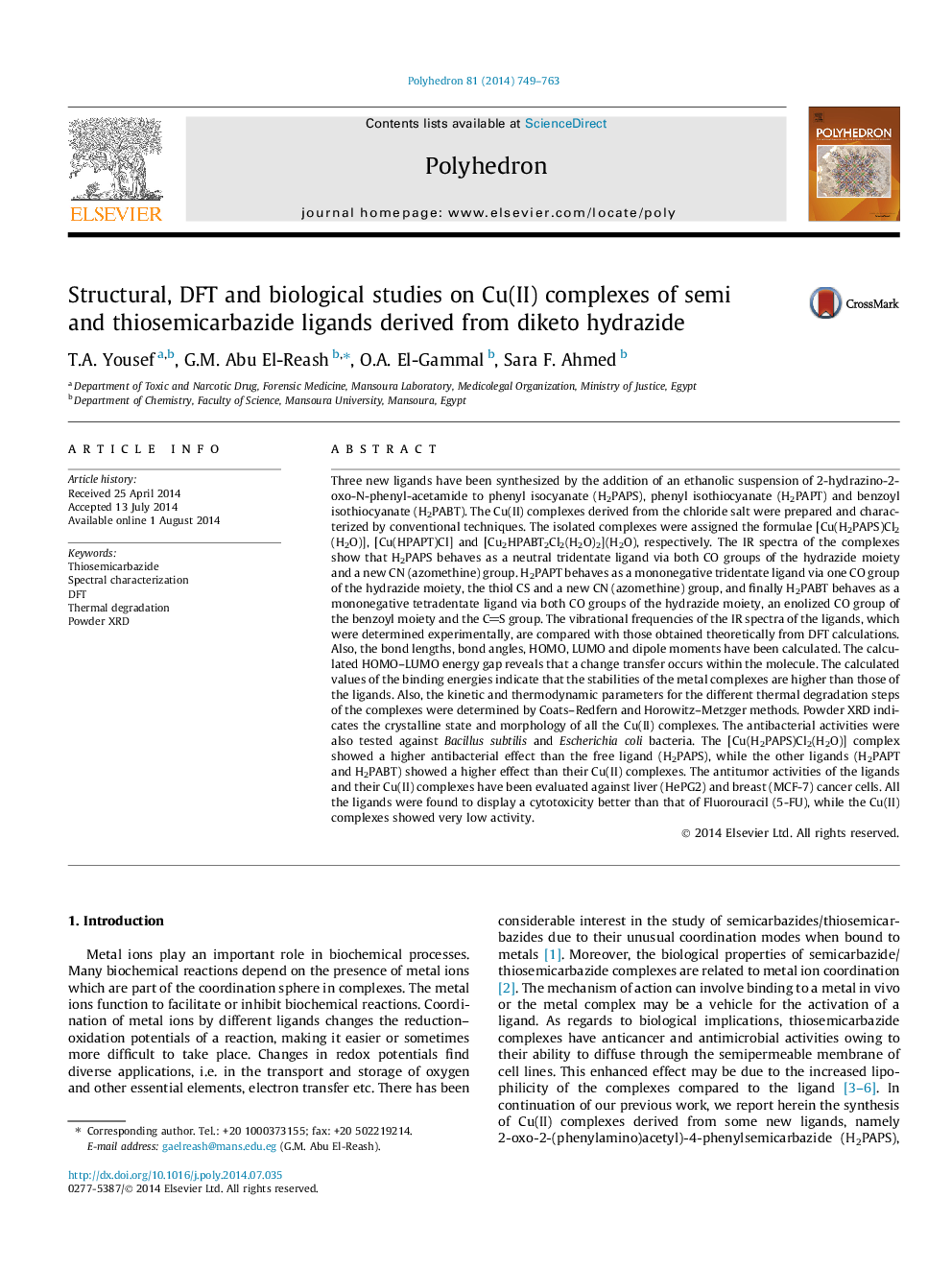| کد مقاله | کد نشریه | سال انتشار | مقاله انگلیسی | نسخه تمام متن |
|---|---|---|---|---|
| 1334490 | 1500258 | 2014 | 15 صفحه PDF | دانلود رایگان |

Three new ligands have been synthesized by the addition of an ethanolic suspension of 2-hydrazino-2-oxo-N-phenyl-acetamide to phenyl isocyanate (H2PAPS), phenyl isothiocyanate (H2PAPT) and benzoyl isothiocyanate (H2PABT). The Cu(II) complexes derived from the chloride salt were prepared and characterized by conventional techniques. The isolated complexes were assigned the formulae [Cu(H2PAPS)Cl2(H2O)], [Cu(HPAPT)Cl] and [Cu2HPABT2Cl2(H2O)2](H2O), respectively. The IR spectra of the complexes show that H2PAPS behaves as a neutral tridentate ligand via both CO groups of the hydrazide moiety and a new CN (azomethine) group. H2PAPT behaves as a mononegative tridentate ligand via one CO group of the hydrazide moiety, the thiol CS and a new CN (azomethine) group, and finally H2PABT behaves as a mononegative tetradentate ligand via both CO groups of the hydrazide moiety, an enolized CO group of the benzoyl moiety and the CS group. The vibrational frequencies of the IR spectra of the ligands, which were determined experimentally, are compared with those obtained theoretically from DFT calculations. Also, the bond lengths, bond angles, HOMO, LUMO and dipole moments have been calculated. The calculated HOMO–LUMO energy gap reveals that a change transfer occurs within the molecule. The calculated values of the binding energies indicate that the stabilities of the metal complexes are higher than those of the ligands. Also, the kinetic and thermodynamic parameters for the different thermal degradation steps of the complexes were determined by Coats–Redfern and Horowitz–Metzger methods. Powder XRD indicates the crystalline state and morphology of all the Cu(II) complexes. The antibacterial activities were also tested against Bacillus subtilis and Escherichia coli bacteria. The [Cu(H2PAPS)Cl2(H2O)] complex showed a higher antibacterial effect than the free ligand (H2PAPS), while the other ligands (H2PAPT and H2PABT) showed a higher effect than their Cu(II) complexes. The antitumor activities of the ligands and their Cu(II) complexes have been evaluated against liver (HePG2) and breast (MCF-7) cancer cells. All the ligands were found to display a cytotoxicity better than that of Fluorouracil (5-FU), while the Cu(II) complexes showed very low activity.
The antitumor activities of the ligands have been evaluated against liver (HePG2) and breast (MCF-7) cancer cells. All ligands were found to display cytotoxicity that is better than that of Fluorouracil (5-FU).Figure optionsDownload as PowerPoint slide
Journal: Polyhedron - Volume 81, 15 October 2014, Pages 749–763